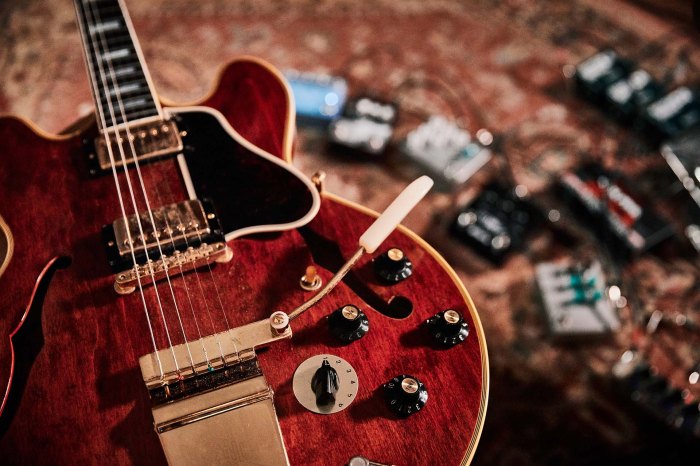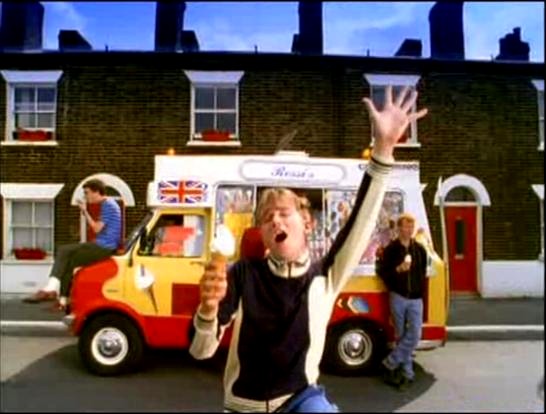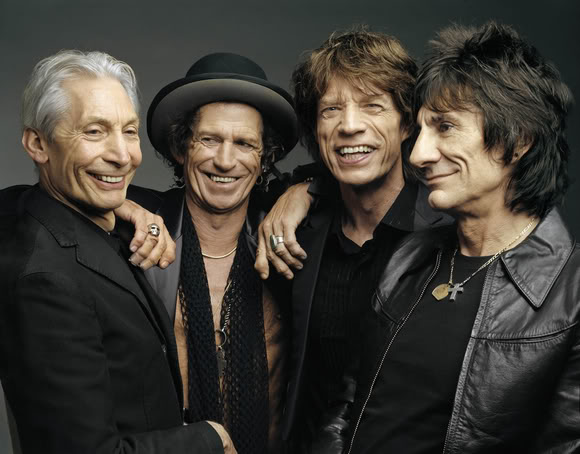
I’ve recently made an iTunes playlist called “The Guitar” which, funnily enough, features songs which have great guitar. Here it is, with some comments. I restricted myself to one song per artist.
“The Act We Act”, Sugar Copper Blue
Bob Mould has surely got one of the best guitar sounds in rock. Played loud front and centre, the guitar here is so deep and loud, yet melodic – it’s rock for sure, but nothing like metal. I imagine he (as former Husker Du frontman) was pissed off that Nevermind was so successful, and wanted to really show off his chops. Great job, Bob.
“Columbia”, Oasis Definitely Maybe
This is an amazing song, easily my favourite by Oasis. (There’s not really much competition). The snarling guitar sound is terrific, and the pulsing riff and circular guitar lead could just go on forever.
“Only Shallow”, My Bloody Valentine Loveless
An utterly explosive opener to MBV’s magnum opus. The contrast between the overdriven guitar and the trancey, dreamy verses is delicious.
“One”, Metallica …And Justice For All
That machine gun bit is still fucking incredible.
“Bron-Yr-Aur”, Led Zeppelin Physical Graffiti
Jimmy Page didn’t just do crushing riffs (see: “Immigrant Song”, “Heartbreaker”, “The Rover”), he is an amazing strummer. This accoustic worlout is from my favourite Zep album, Physical Graffiti, though Disc 2 (odds and ends) rather than Disc 1 (classics like “Custard Pie”, “The Rover” and “In My Time Of Dying”).
“Keep It In The Family”, Anthrax Persistence of Time
Seven minutes of pure, focused, channelled aggression. The tightness of the riffing is amazing.
“Protest And Survive”, Discharge Hear Nothing, See Nothing, Say Nothing
I deliberately put this after Anthrax because I first heard of Discharge through Anthrax’s b-sides compilation Attack Of The Killer B’s, where they covered this song. I found this album at a record sale (just check the back cover!) and was blown away. The guitar sound is incredibly powerful, hugely overcharged without distorting.
“Wah-Wah”, George Harrison All Things Must Pass
In which George gets out his anger at The Beatles.
“Three Days”, Jane’s Addiction Ritual de lo Habitual
I love multi-section epic type songs, from “Bohemian Rhapsody” to “Paranoid Android”. This is a killer example, with outstanding guitar from Dave Navarro in numerous points – the guitar solo which brings in the instrumental section (from 4.43), the static riff generating enormous electric power and tension (from 7.08), the sitting-on-the-brink-of-nirvana chords (9.24)… One of the best rock songs ever.
“Friction”, Television Marquee Moon
Like all songs on Marquee Moon, this features exceptional interplay on the guitar.
“I Heard Her Call My Name”, The Velvet Underground White Light/White Heat
Though Lou Reed invented lots of different aspects of punk/alternative guitar (static riffing, feedback, massive distortion), this is an example of his lead work. Overblown to the max!
“Satellite”, Sex Pistols Kiss This
Steve Jones is one fine rhythm guitarist. This was only a b-side (to “Holidays In The Sun”), but with its massive overdubbed guitars and Johnny Rotten throwing himself into the eye of the hurricane, it is a fan favourite.
“One In A Million”, Guns N’ Roses G N’ R Lies
GN’R at the Stones-iest. The fuzzy lead (by Izzy Stradlin) over accoustics is very reminiscent of Sticky Fingers-era Stones. Fucking brilliant. Ah, what could have been…
“I Found That Essence Rare”, Gang Of Four Entertainment!
Punk you don’t associate with rhythm, but Gang Of Four manage to be funky and punky. I don’t see that much of them in Franz Ferdinand, but they’re supposed to be a major influence. Gang Of Four stomp on them.
“Bed Crumbs”, Fudge Tunnel Hate Songs in E Minor
A forgotten gem of British metal, Hate Songs in E Minor has some massive, distorted, echoing guitars. “Bed Crumbs” has this, and a crushing riff… wow.
“Hangar 18”, Megadeth Rust in Peace
Dave Mustaine took great pride in being named the best metal guitarist in some book – it can appear odd to people outside the magic circle just how sensitive to critical attention artists can be. He found particular pride/glee in being named ahead of Kirk Hammet: I guess the scars remain. Anyway, the technical level on Megadeth’s best album Rust In Peace is astonishing. The best song “Hangar 18” showcases this: the shifts in time, the fury, the solos, the slashing riffs, the mounting climax… yup, Mustaine could play.
“Porch”, Pearl Jam Ten
Pearl Jam were a bit earnest and right-on in comparison to Nirvana’s headlong dive into the chaos of punk. They were the affirmative Clash to Nirvana’s nihilistic Sex Pistols. This song is one of the punkier in their debut, Ten (which is reverb-rich and soft-edged), and has this wonderful sense of mounting excitement
“Black Math”, White Stripes Elephant
See, I do like some music after 2000…! Jack White is obviously a great guitar player, with a primal, bluesy sound. I love the careening, free-wheeling vibe to this song.
“Amazing Journey/Sparks”, The Who Live At Leeds
Goddamn. Just… goddamn.
“Can’t You Hear Me Knocking”, The Rolling Stones Sticky Fingers
Is it just me or were the Stones only really good when Mick Taylor was in the band? Well, that and Beggars Banquet. This song has a ferocious fuzz guitar intro (by Keith Richards) and an outstanding solo by Taylor.
“Painkiller”, Judas Priest Painkiller
I can see the evolutionary importance of Judas Priest, in their twin-lead guitars and stripping-out of any blues influences (whereas Black Sabbath used to, you know, be a blues band). But apart from Stained Class, I don’t think their albums really that much cop. Painkiller was a roaring return to form after a pretty indifferent decade in the 1980s, featuring magnificently over-driven guitars and a solo that threatens to burst out through the musical score.
“Symptom Of The Universe”, Black Sabbath Sabotage
In which Tony Iommi invents thrash metal, eight years before Metallica’s Kill ‘Em All.
“Atrocity Exhibition”, Joy Division Closer
Bernard Sumner (nee Albrecht), like other guitarists in bands with stand-out bass players, often used his for texture and commentary rather than melody. Here, he make teeth-grindlingly abrasive shards and yowls, over a lop-sided rhythm and bass played as lead. It’s a fascinating step-change from previous album Unknown Pleasures.
“Theresa’s Sound World”, Sonic Youth Dirty
I love how this modulates from arpeggios to a beautifully controlled rising-tension section, ebbing and flowing several times, before building to an ambiguous climax. Compared to the simple telelogical pleasures of rock music, with its massive resounding resolutions, this is pleasingly open-ended and enigmatic.
“Some Girls Are Bigger Than Others”, The Smiths Strangeways, Here We Come
What I’ve previously called “the beautiful gossamer shimmer” of Johnny Marr’s guitar. Magnificent.




